Table of Contents
When you start to notice the original plaster on your swimming pool peeling, or if you see cracks and wonder whether or not your pool is leaking, or you’re just tired of seeing discolored marks on your pool, it may be time to update the surface of your pool.
As much as we’d love pools to be built once and last forever, like any other structure, it will eventually need some updates. If you’re lucky, your pool was originally built following industry standards, but this isn’t always the case.
If your pool was originally built more than 20 years ago, it may also just be time to look into this option due to natural aging and breakdown.
The two most popular pool finishes for resurfacing swimming pools are pebble (also known as pebble tec, or pebble tech) and plaster. Most older pools have white plaster, and some have colored plaster. Pools built around or after the 1990s are more likely to include a pebble finish. You can easily distinguish between the two types of pool finish as seen in the photo below.
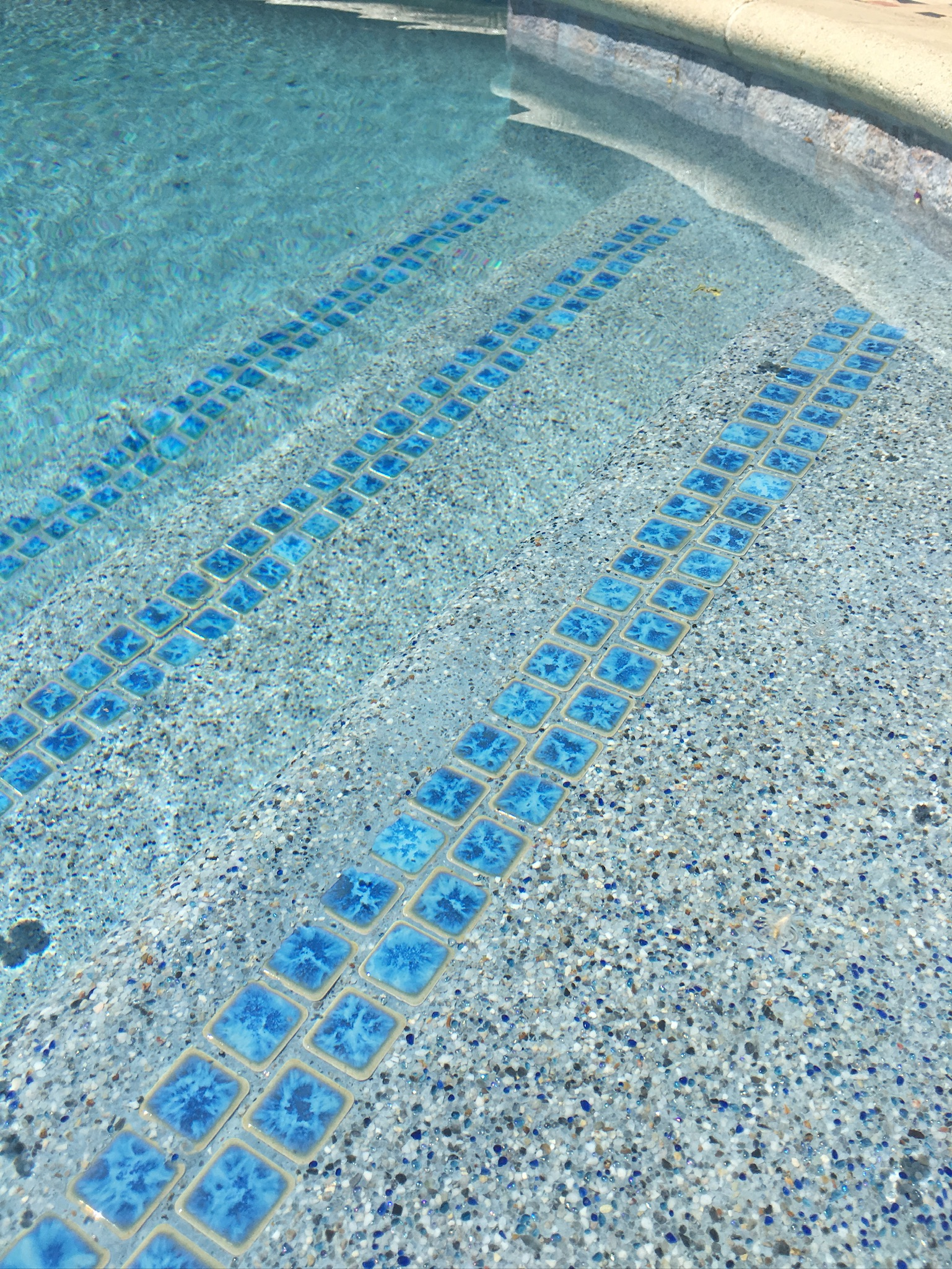
A mini pebble finish with tile accents on a swimming pool.
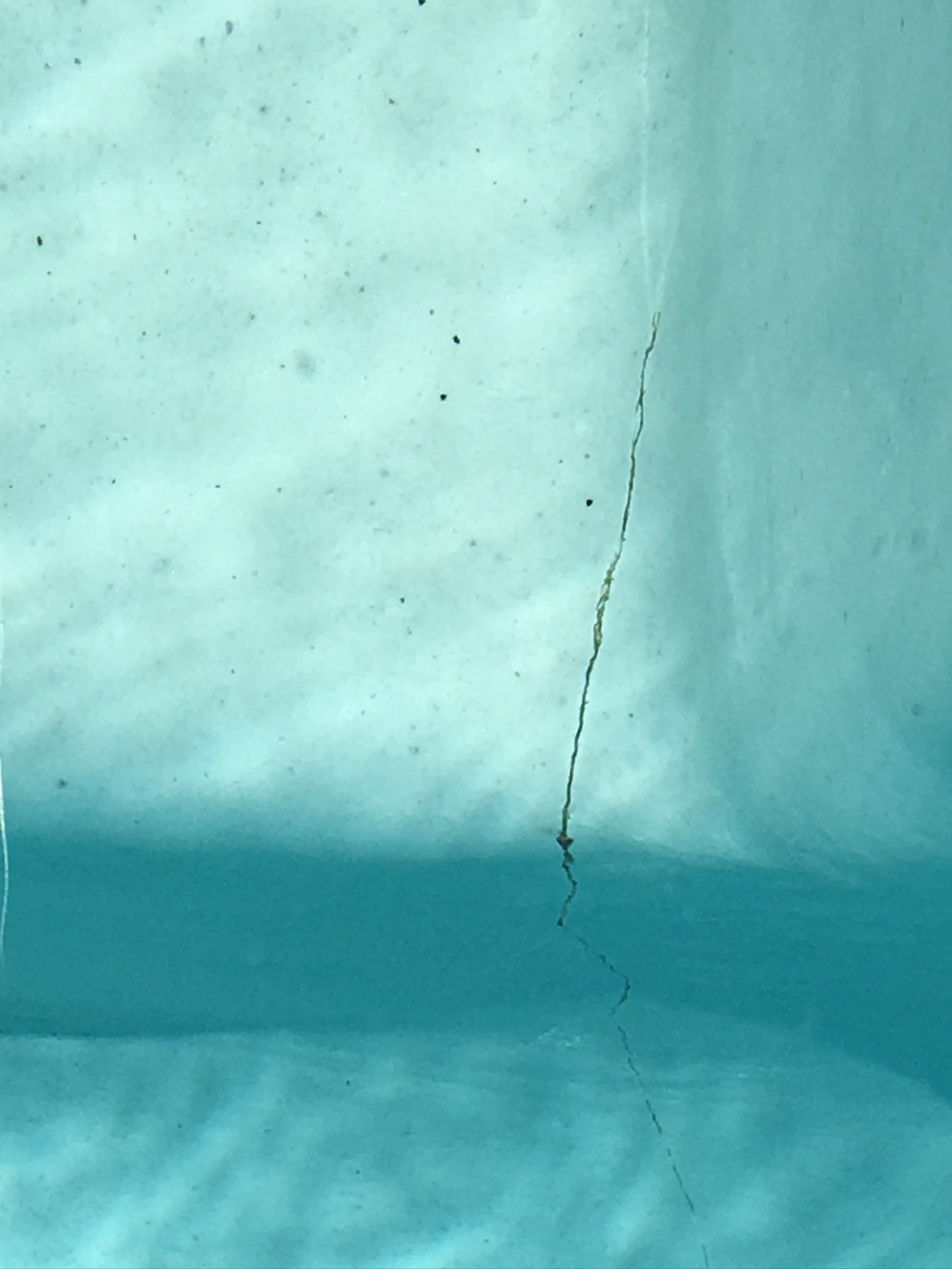
This is a plaster pool that has a crack on the surface. This would be a reason to consider resurfacing your pool.
Though they are the most popular, plaster and pebble are not the only types of pool finishes. There is still a market for vinyl pool installation, and some above-ground pools are made of steel or aluminum.
This article, however, will focus on plaster and pebble. There are pros and cons to both, but ultimately it will depend on what your personal preference and budget are.
Plaster Finish
If you have ever gone swimming in a pool with slippery smooth sides and bottom, you were probably swimming in a pool with a plaster surface. The look is very clean and can be very bright when the sun is out.
Pros
One positive thing about choosing regular plaster to resurface your pool is that it is more cost effective than using a pebble finish. White plaster is the cheapest color to use, so many people choose this option.

Hand troweling using plaster to resurface this pool.
Another plus is the sides and bottom have a smoother finish and won’t hurt anyone’s feet or hands. This finish does not have any texture, and so is naturally smoother than pebble. Your swimsuit will not snag on this material, and it will be relatively easy to clean with a brush or vacuum.
As far as plaster installation, the process is straightforward, and you can begin filling your pool as soon as the plaster is applied to your pool shell.
Cons
Years ago, plaster was the gold standard for new pool surface finishes. It was high quality, durable, and cost-effective. Plaster pools would easily last 20 years and still look and feel good to the touch.
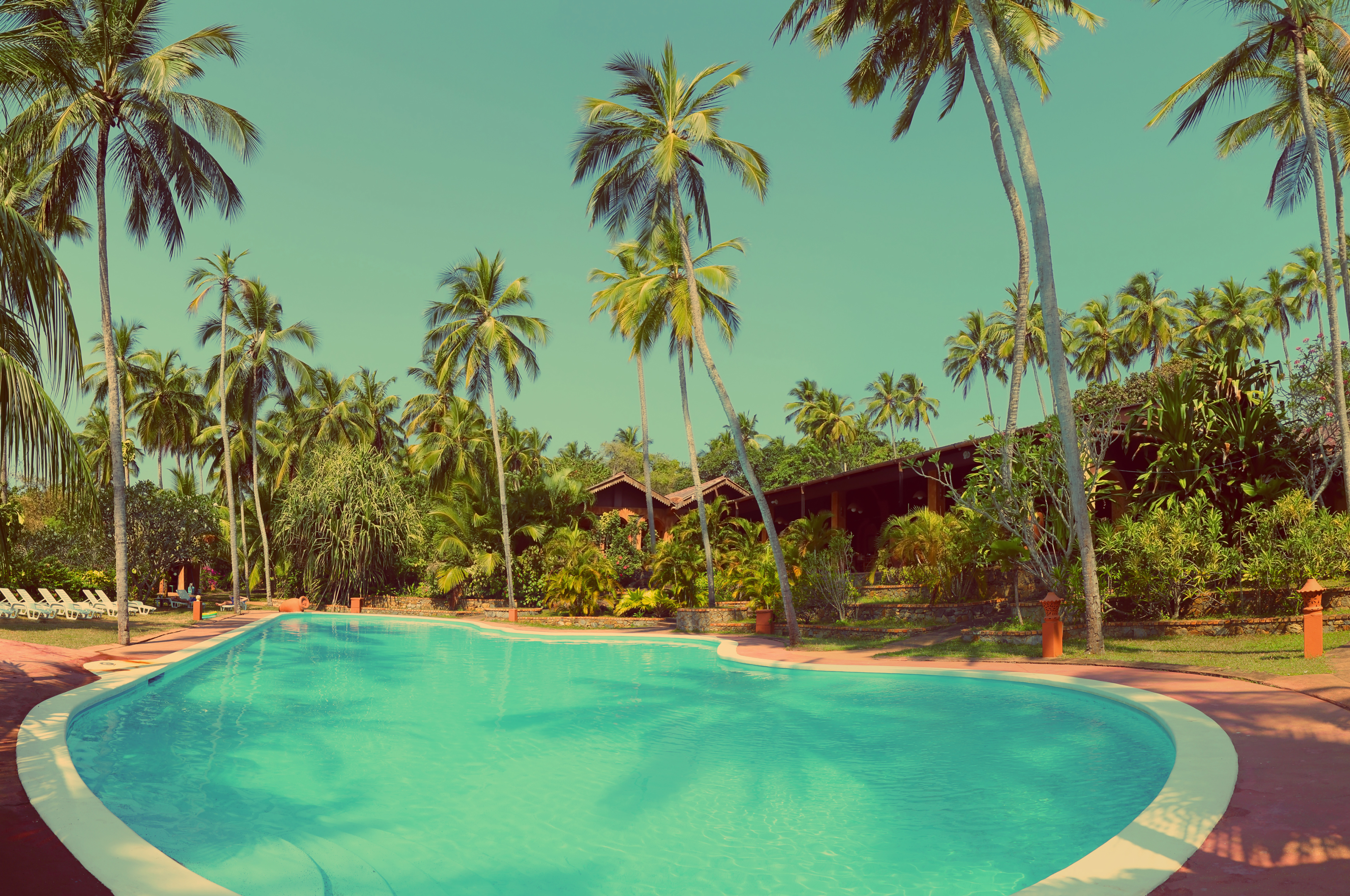
An older-style pool with a plaster surface.
Due to changes in environmental regulations, especially in California, plaster is no longer considered the high quality material it used to be. Many pool contractors will not guarantee plaster for any length of time and will only recommend it if the owner wants a quick fix, or simply can’t afford another option.
Many people who flip houses and need a cheap way to make their pool look good use plaster as their preferred pool finish. They aren’t worried about the longevity of the pool surface, as someone else will purchase the home and take on that responsibility.
As mentioned above, white plaster is the cheaper option, but as soon as you begin adding any color whatsoever to the mixture, the price gets close to what it would cost to use a higher quality material, like pebble.
For this reason, plaster is not as easily customized as a pebble pool finish, due to the spike in costs when color is added to the mix.
Pebble Finish
Many people refer to pebble as “pebble tec” or “pebble tech” without understanding that PebbleTec is actually a brand of pebble products. There are other brands that offer pebble finishes as well.
Although Pebble Tec has been one of the longest manufacturers of pebble surfaces, it is certainly not the only one.
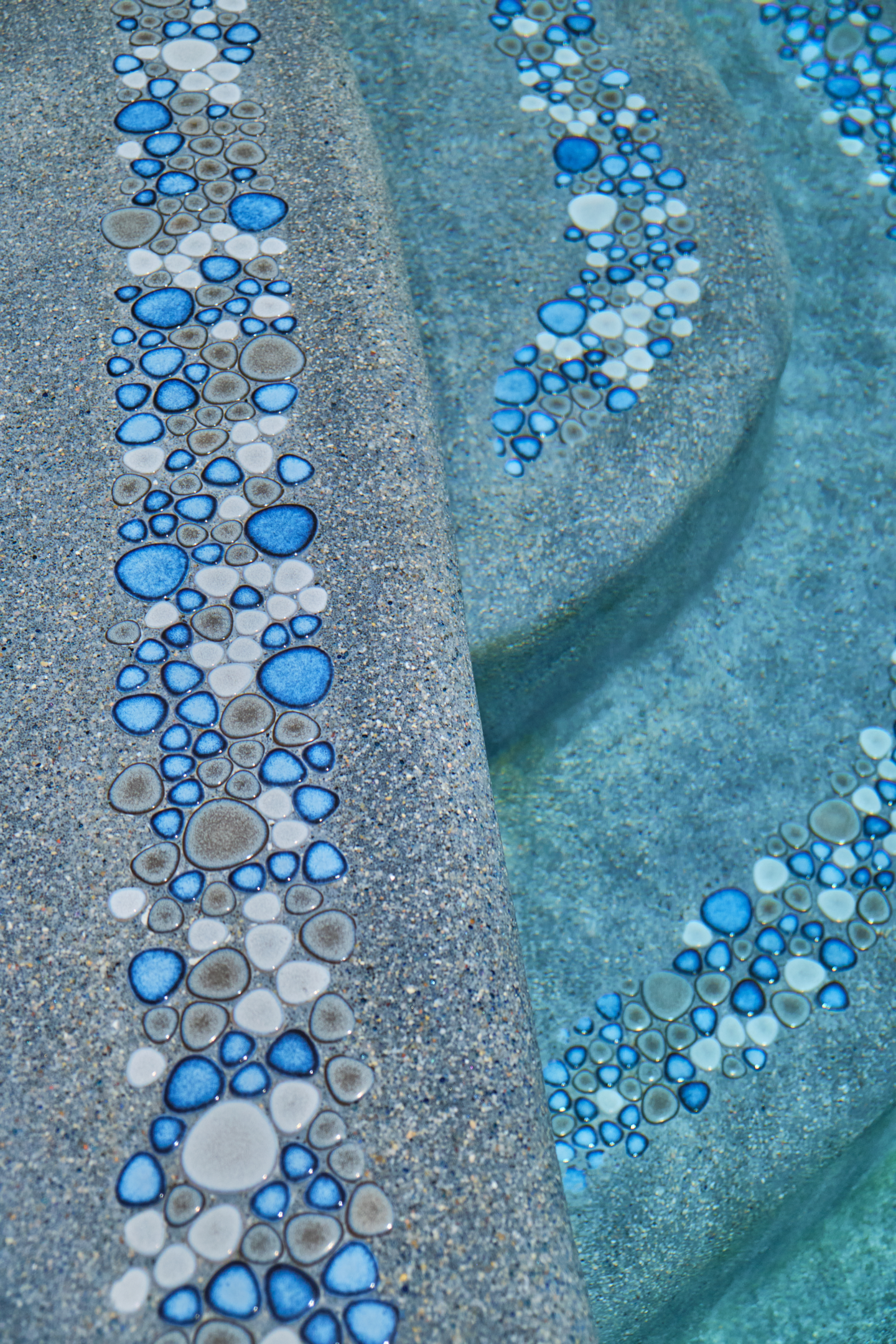
Steps in a swimming pool with tile accent detail and pebble surface.
For the purpose of this article, we will refer to this material simply as ‘pebble’, but we will mention the equivalent finishes from the Pebble Tec brand.
Pros
A pebble finish will last longer compared to plaster, with many pool builder contractors offering an 8 year or longer warranty. Therefore, pebble finish has better value for the price Pebble can also give a more unique color to your pool surface.
Pebble pools have varying degrees of texture, so it will give more traction and stability to swimmers in your pool or spa. If you are partial to the smoothness that a plaster finish would provide, there are micro pebble options that can come close to the clean, smooth feel of plaster.
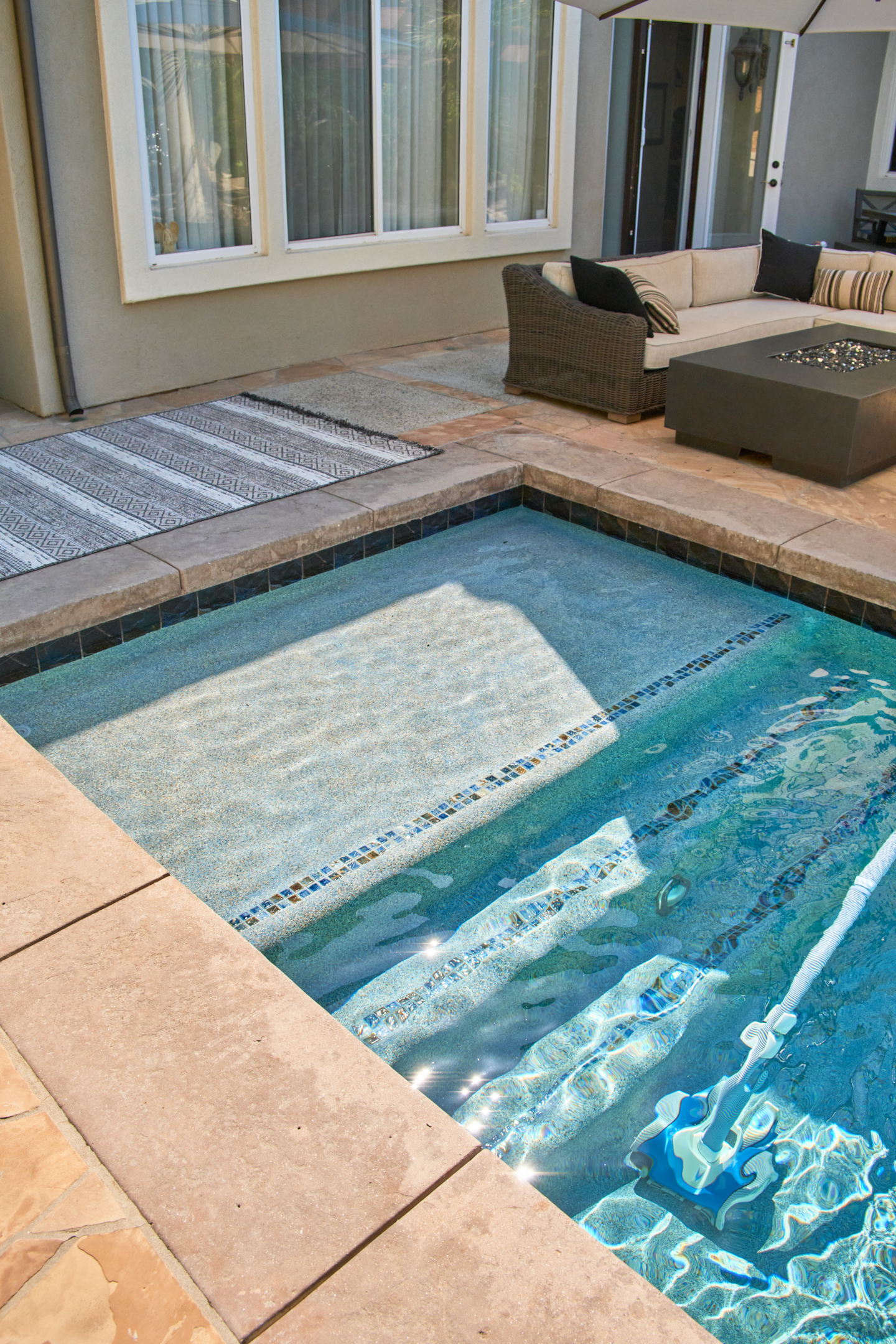
An extended step resurfaced with pebble, showing texture and color.
With so many color and texture options, pebble offers every pool owner an easy way to achieve a custom look, for roughly the same price as colored plaster. There are new colors added frequently, and your pool contractor can help you find the right color to complement your backyard and outdoor space.
Cons
Original pebble, or pebble tec, was rough and gave pebble a bad reputation as being uncomfortable. Now, with newer and smoother options, this isn’t the con that it once was.
Pebble can be pricier than other options, especially if you go with micro pebble or pebble fina. As the old saying goes, however, you get what you pay for. The quality you will get with pebble is unmatched, especially compared to plaster.
Pebble Options
A pebble pool finish usually comes in three different finishes, which then each comes in many different color options. Not only are there multiple colors and textures, but you can also add aggregate options that can be included in your custom blend when you resurface your pool.
As technology improves, there will undoubtedly be more options, so make sure you stay in touch with your local distributor or pool product retail store. This way, when you make your choice, you will have the latest information to help you decide.
Original Pebble
Original pebble, or pebble tec, is made of a mix of small pebbles. It has a fairly rough surface, which may feel more natural to some swimmers, almost like sand.
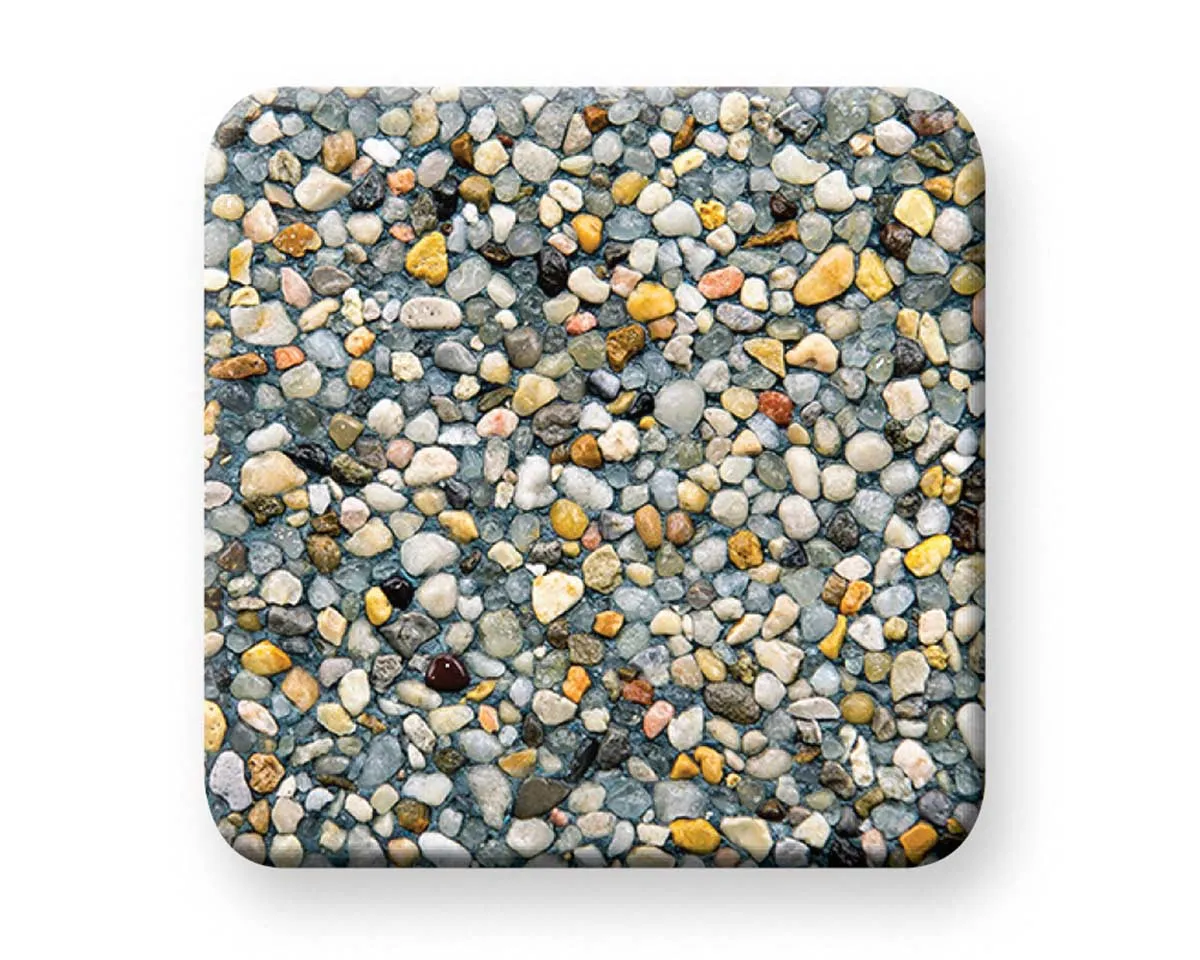
Original Pebble (pebble tec)
However, it can be tough on the skin and feet, much like sand, which has caused some bad press. It has a poor reputation not only due to these reasons, but it has ruined more than a few bathing suits since its introduction on the pool finish scene.
Mini Pebble
Over the years, as technology has improved, smoother options have been created such as mini pebble, or pebble sheen. This blend is made of smaller pebbles than the original blend but still offers the unique look of pebble.
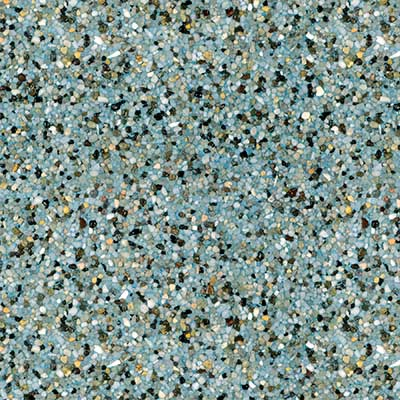
Mini Pebble (pebble sheen)
This creates a smoother surface that feels less rough to the touch than the original, larger pebbles. You will still feel some texture, but it should not be rough or painful to walk on or touch.
Mini pebble, or pebble sheen, is slightly more expensive than the original pebble, but far superior in terms of comfort for feet and skin of swimmers in your pool, so it is worth the upgrade to pebble sheen in our opinion.
Micro Pebble
The smoothest option of the three is micro pebble or pebble fina. This option is pricier than the other two, but many pool owners believe the cost is worth it to have a smooth surface that still looks like the high-quality pebble we know and love.
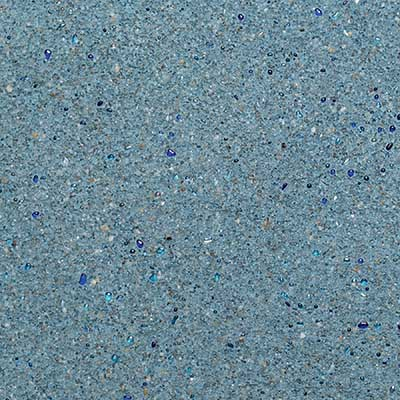
Micro pebble (pebble fina)
You can still choose your color and any add-ins like glass or shell to a micro pebble finish. Most people do add some sort of aggregate to the pebble, as it creates a customized, unique finish that is all your own!
Aggregates
When you install a pebble pool finish, you can also include one or more additional materials to enhance the look. One option is glass beads, usually in a variety of different colors. The glass makes the light reflect off of the surface of your pool.
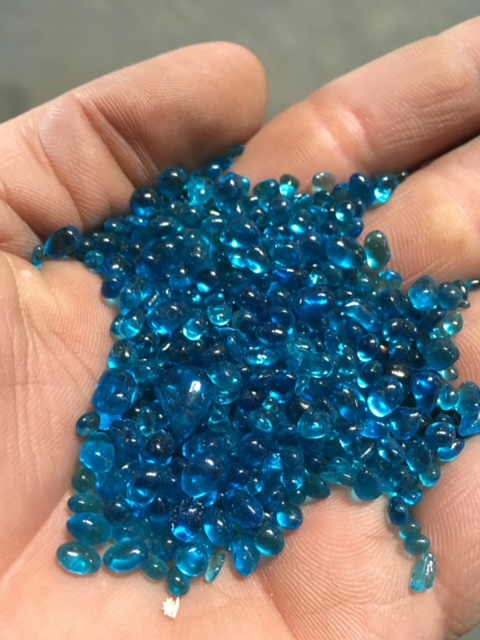
Glass beads used as aggregate to customize pebble finishes.
The most popular blend is called the ‘Puerto Rico’ blend, which includes dark and light blue beads, as well as clear and white beads to add dimension.
The other aggregate option is small abalone shell pieces, to give your pool a shiny reflective element. You can also choose to incorporate both of these if you’d like.

Abalone shell pieces used as aggregate to add glimmers of shine to pebble finishes.
Comparisons
Plaster and pebble pool finishes can be looked at in terms of cost, quality, installation and timeline, and longevity. Ultimately, whichever aspect is more important to you, the pool owner, is going to help you determine which of the two finishes you should choose for your pool remodel.
Cost
As mentioned above, white plaster is the cheapest option to refinish your pool surface. Adding color to plaster can increase the cost and make it equally as affordable as standard pebble or mini pebble (pebble sheen).
Micro pebble (pebble fina) is slightly more expensive than mini pebble and offers the most smooth surface of all of the mentioned options.
Quality
Years ago, plaster used to be a quality, durable option for private swimming pools. Nowadays, it is no longer the most durable option on the market. Pebble lasts longer while offering dimension and texture that plaster cannot.
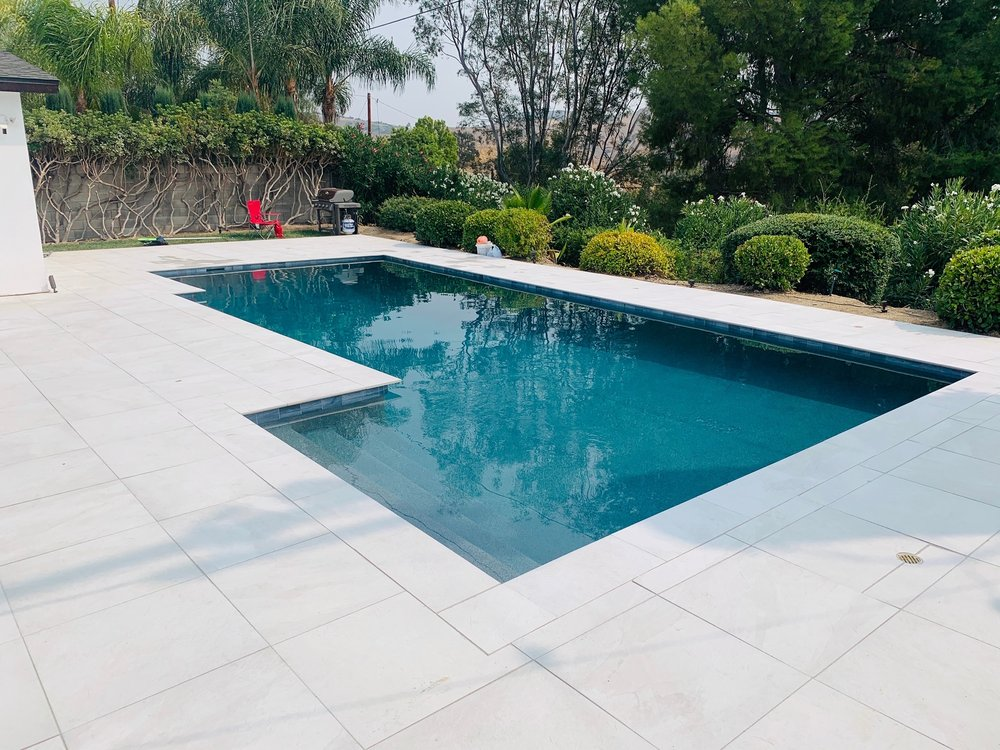
A newly resurfaced pool using micro pebble. Notice the color and texture.
If you are someone who prefers to have their surface backed by a warranty, pebble may be your best option, as the product is known for its durability, quality, and longevity.
Installation and Timeline
Both plaster and pebble finish installations start out the same way: after draining all the water from your pool, the last pool surface will be chipped out and any original plaster will be removed, leaving the cement shell exposed to inspect and repair any cracks or structural issues.
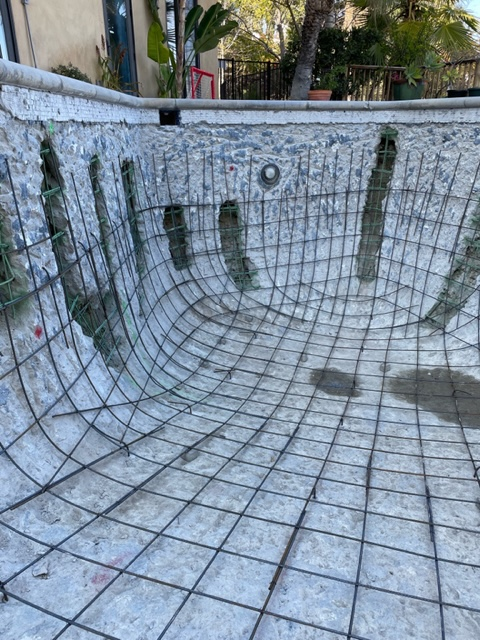
A pool that needed a new inner shell after analyzing the damage and cracks when chipping out before resurfacing.
After that, the crew will use shotcrete to make your pool surface level and even. Once that is cured and ready, the pebble surface or plaster will be pumped on to the shell, then hand troweled over all the surfaces in your pool.
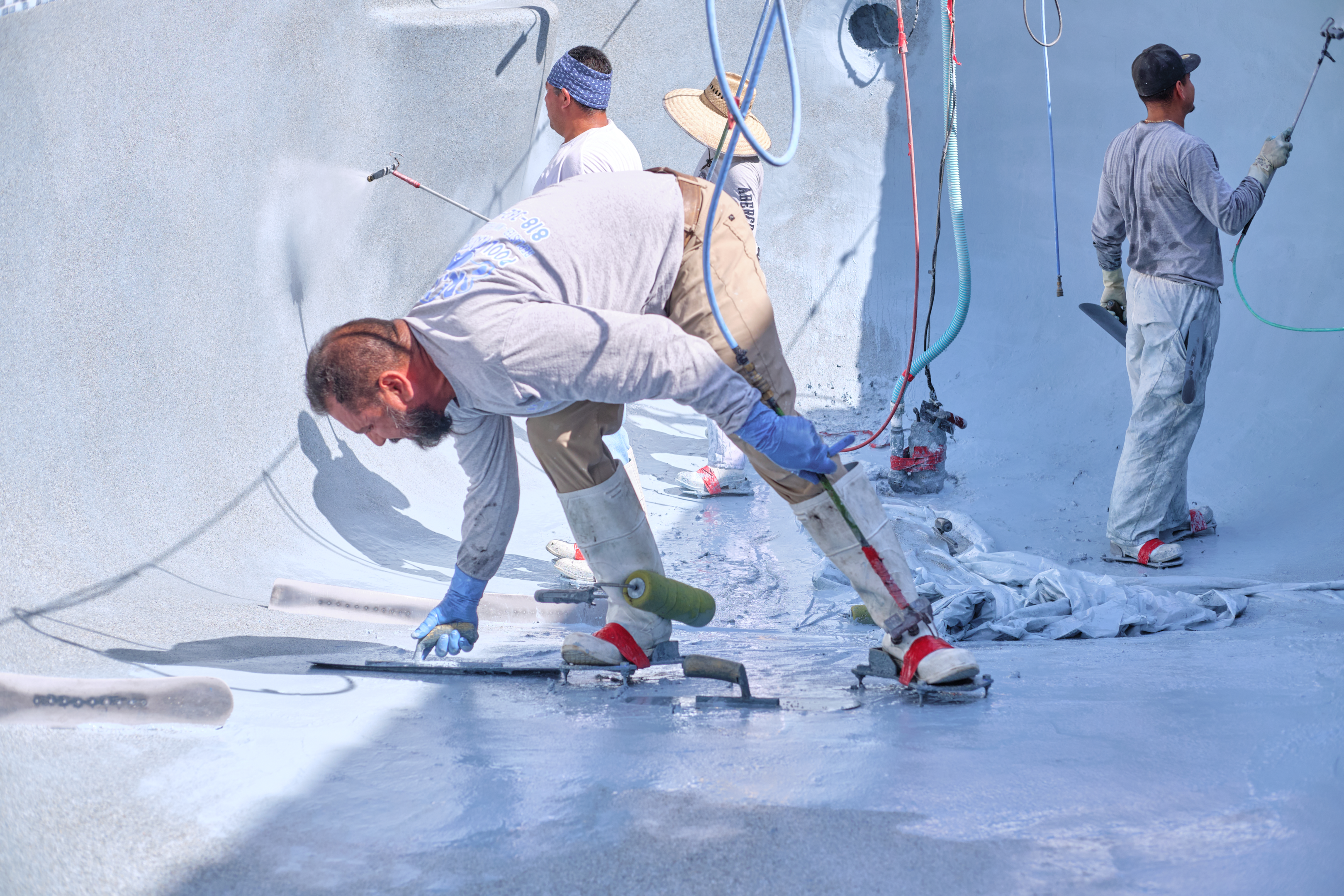
Pebble professionals hand troweling on the pebble surface.
If you are adding any shell or glass to your pool, it will be included in the surface during this step.
At this point, if you are installing plaster, after it is applied, your pool guy or crew will immediately begin to fill your pool with water.
If you are going with pebble, however, it will need to undergo an acid wash to remove any cream from the application process. This will also leave behind the exposed aggregate before finally being able to fill your newly remodeled pool with water.
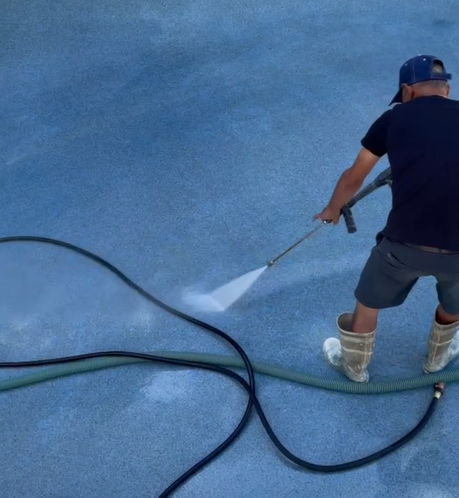
An acid wash to clean the leftover cream from the pebble surface.
The startup process is essentially the same for each surface material. This is where the water chemistry will be tested and balanced, the filter will be cleaned, and any loose ends will be tied up. After that, you’re ready to enjoy your newly refinished pool and updated backyard!
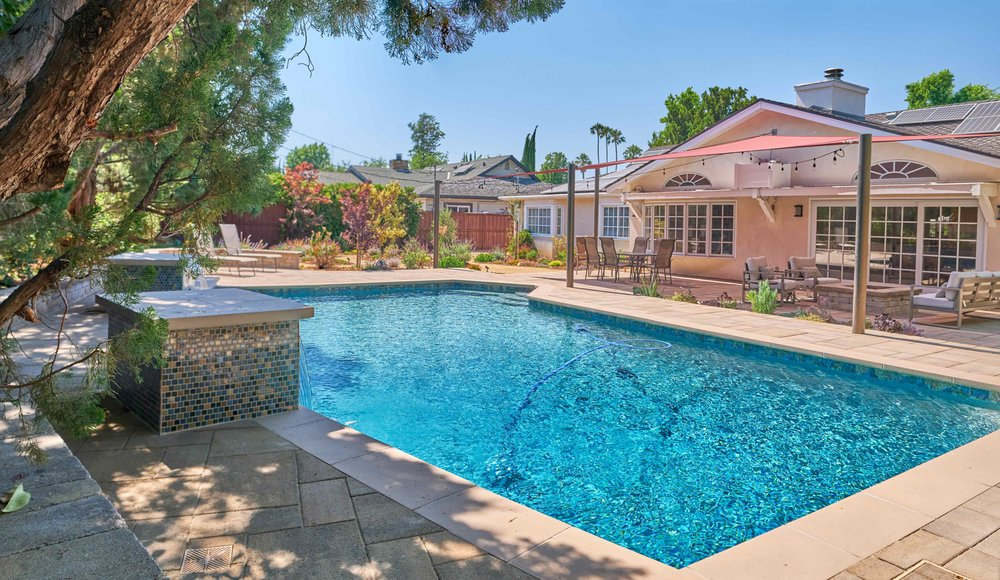
A newly resurfaced pool. Notice the dimension of the color, achieved with a pebble finish.
Longevity
Although plaster pools used to last much longer, they now can only be expected to 7-8 years before your pool will need to be turned into a job site again, and your pool surface will need to be refinished again.
Considering this, if you have the budget, and don’t want to go through the whole process again in the future, you might consider researching a pebble product, which can save you money in the long run, and also offer a smoother, more durable surface for your friends and family who enjoy your pool.
Who Should I Call If I Need to Resurface My Pool?
If you think you may need some help in this department, or you know it is time to remodel the surface of your pool, you should contact your pool maintenance technician to see if he or she has any personal recommendations for you. Then, look online for local companies that specialize in structural repair and resurfacing.
You may be tempted to go with the cheapest quote, but we recommend contacting at least three companies; a lower-priced, middle-priced, and a pricier option. This way you can see what each company will offer and what you can expect for your money.
Why Should I Go With A Structural Repair and Resurfacing Company?
You may not think you need a company that can do structural repairs, but once you remove your old pool finish, you may find unexpected surprises waiting for you, especially if your pool was built more than 40 years ago.
Cracks, rusted rebar, exposed rebar, drain issues, or plumbing/electrical issues are just some of the unfortunate things customers have had to deal with after the chip out process.
You may be lucky and not need any of the aforementioned repairs, or you may find that your pool needs a completely new inner shell or rebar stapling or stitching. If this is the case, you will be happy you went with a trusted contractor who is experienced in this type of work.
Regardless of what repairs your pool may or may not need, a trustworthy professional can find out for you and help you with next steps.
Stanton Pools Can Help!
Stanton Pools specializes in structural and crack repair, inner shell replacement, and plaster and pebble finish options. If you are in the Southern California area, we would love to help you update your pool. We have handled everything from the smallest cracks to complete overhauls and rebuilds of inner shells.

A before and after of a pool that had discoloration and looked dated. Both images show pebble, but the second has a lighter color.
If you want a company that will be honest with you, that you can trust with your backyard and pool, and with a wide range of experience, we are proud to offer our knowledge and expertise. Find out why so many people trust us, as evidenced by our glowing reviews.
At the very least, we can offer some advice and recommend a company close to you if you are outside of our service area. Check out our portfolio and contact us or give us a call at (888) 214-0425 to see what we can do for you.


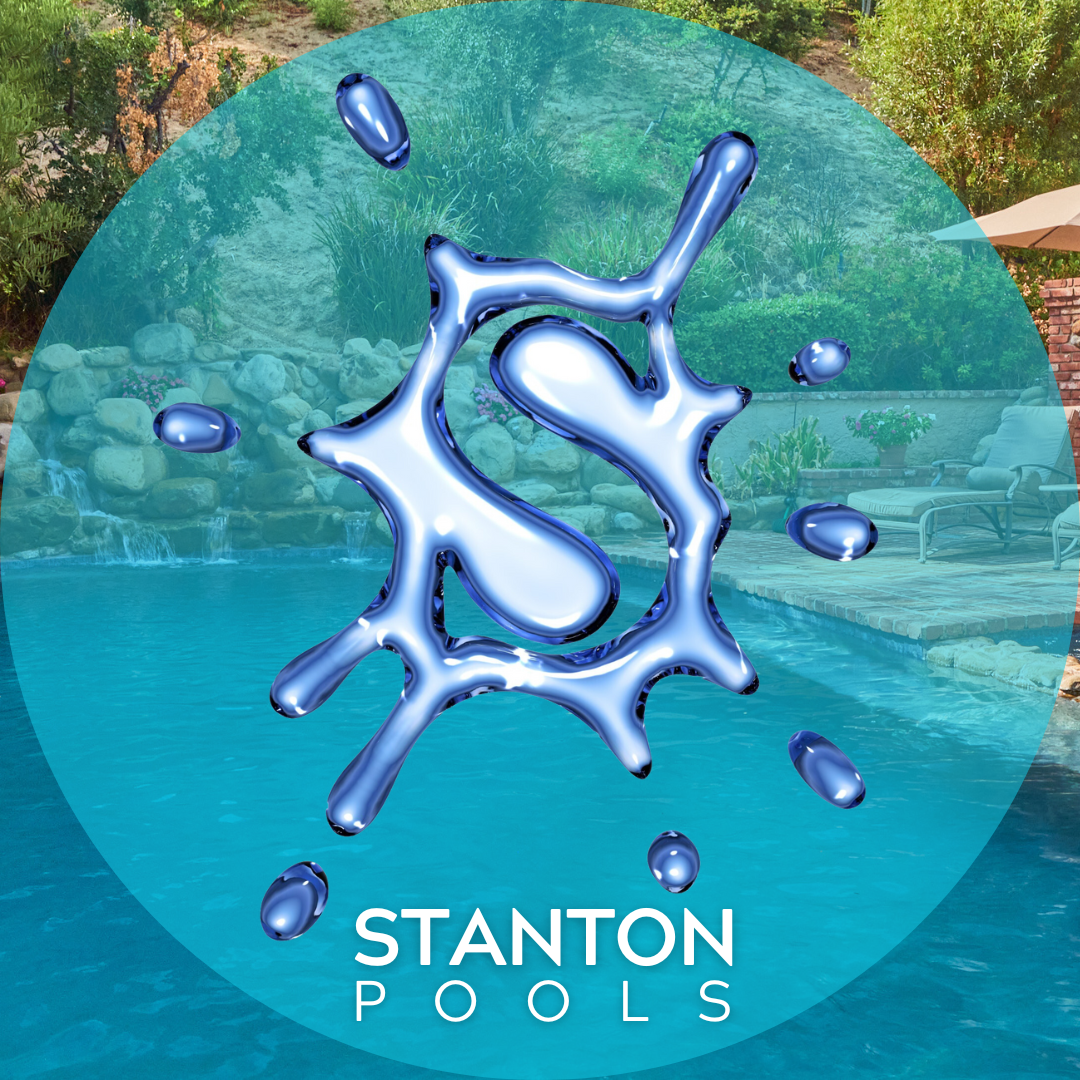




0 Comments